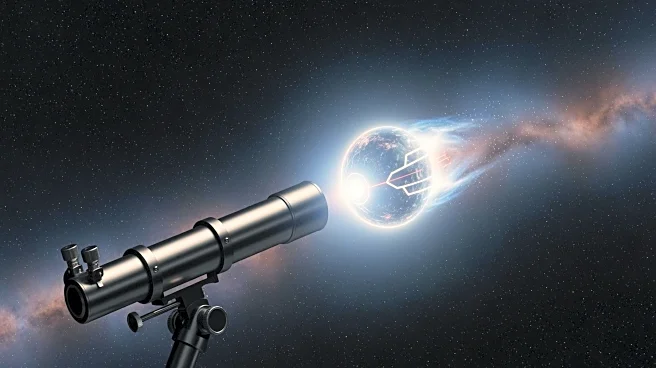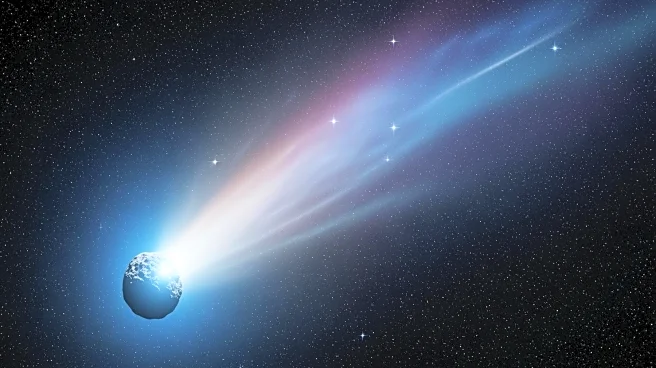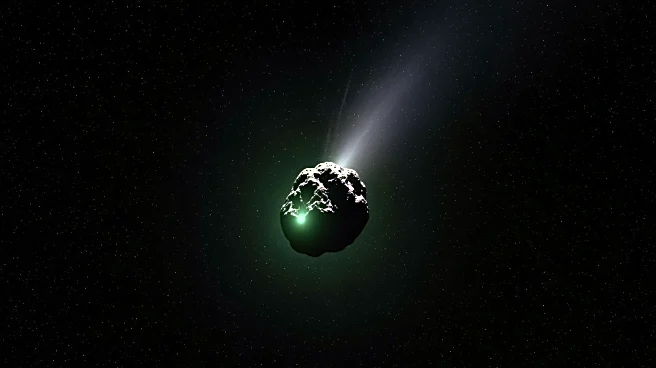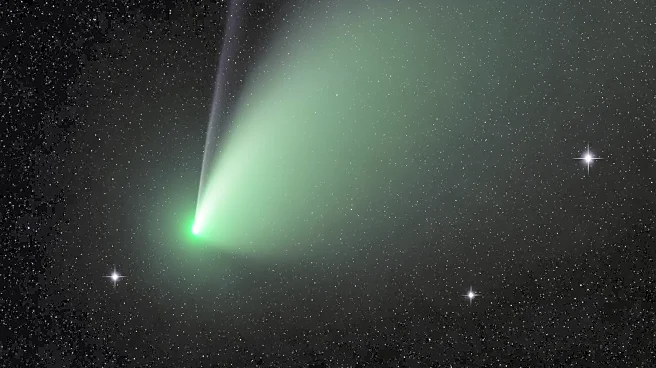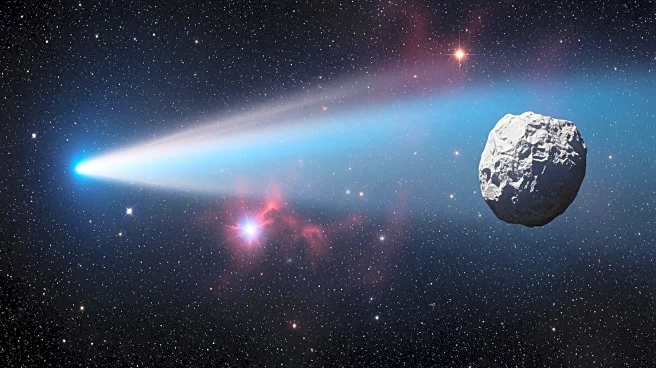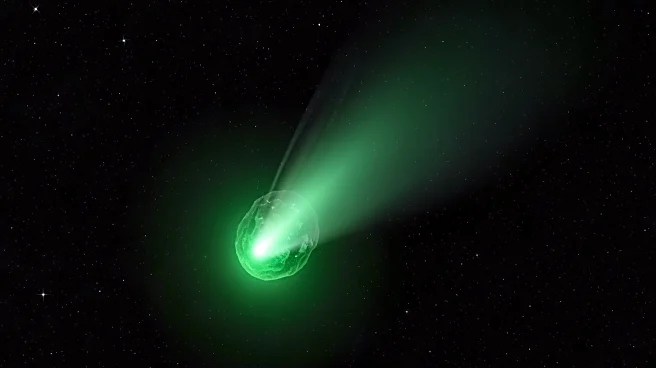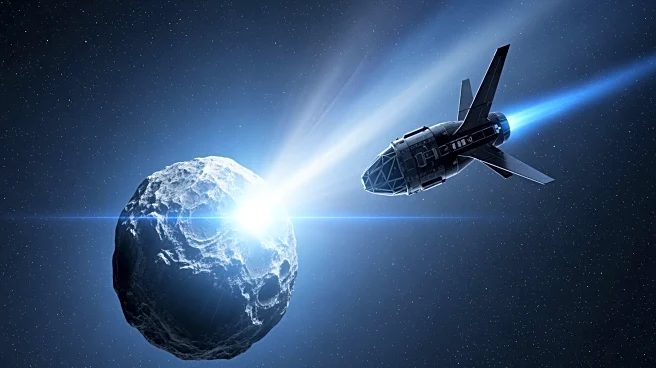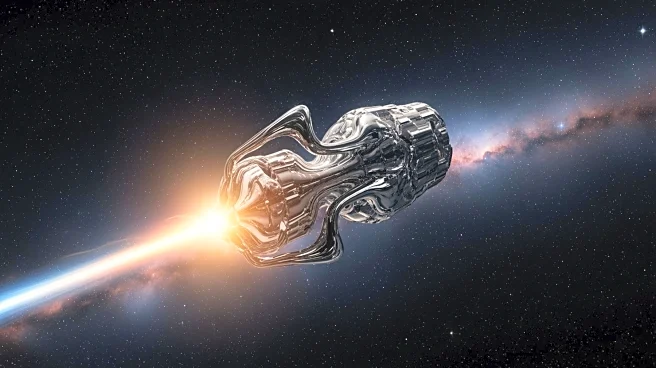What's Happening?
Recent images of the interstellar object 3I/ATLAS, captured by the Lowell Discovery Telescope in Arizona, reveal a surprising absence of a cometary tail. The object, which was at a distance of 1.38 astronomical
units from the Sun and 2.23 astronomical units from Earth, was expected to exhibit a tail due to mass loss and solar radiation pressure. Harvard astrophysicist Avi Loeb noted that the object appears as a bright ball of light with a faint glow, resembling a coma or atmosphere, but lacks clear evidence of a tail. This observation contradicts typical comet behavior, where a tail forms as the comet approaches the Sun. The angle between 3I/ATLAS and the Sun is expected to increase, potentially allowing observers to confirm the presence or absence of a tail in the coming weeks.
Why It's Important?
The absence of a cometary tail on 3I/ATLAS challenges conventional understanding of cometary physics and raises questions about the object's nature. If 3I/ATLAS is indeed a natural comet, it should have lost a significant portion of its mass, resulting in a tail. The lack of such a feature could suggest alternative explanations, including the possibility of the object being artificial. This development is significant for astrophysics, as it may prompt further investigation into the characteristics and origins of interstellar objects. The findings could impact future research and exploration strategies, as scientists seek to understand the behavior and composition of objects entering our solar system.
What's Next?
As the angle between 3I/ATLAS and the Sun increases, terrestrial observers will have better opportunities to determine the presence of a cometary tail. Researchers are also awaiting the release of high-resolution images from NASA's HiRISE, which could provide more detailed insights into the object's structure and behavior. These observations will be crucial in confirming or refuting current hypotheses about 3I/ATLAS and may lead to new theories regarding interstellar objects. The scientific community is likely to continue monitoring the object closely, with potential implications for future space missions and studies.
Beyond the Headlines
The missing tail of 3I/ATLAS could have broader implications for our understanding of interstellar objects and their interactions with solar radiation. If the object is artificial, it may prompt discussions about the possibility of extraterrestrial technology and its detection. Additionally, the event highlights the importance of advanced imaging techniques and international collaboration in space research. Ethical considerations may arise regarding the interpretation and communication of such findings, especially if they challenge established scientific paradigms.


